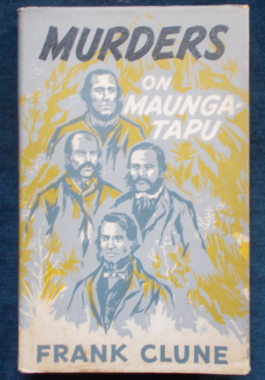-
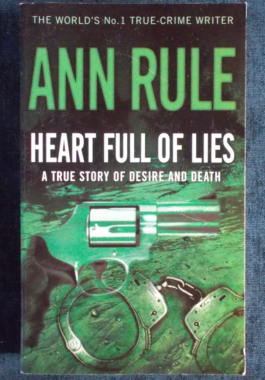
Heart Full Of Lies: Ann Rule
$10.00Liysa and Chris Norton seemed the perfect couple: Chris - tall, athletic and handsome, a pilot for Hawaiian Airlines; Liysa - attractive, seductive, an acclaimed surf photographer. Their son, Bjorn, looked just like his dad and they were raising Liysa's son by a previous marriage. They had beautiful homes on the mainland and in Hawaii. But soon after their idyllic marriage on a moonlit beach, Liysa revealed a rapacious side that Chris had not seen before, and she complained to her friends that Chris was a heavy drinker who beat her. Chris struggled to keep the marriage from unravelling but on a sunny morning in October 2000 he lay dead at a remote campsite. Liysa drove in distress to a friend's house - it appeared that she had been attacked and claimed that she had shot Chris in self-defence but the Oregon state detectives were suspicious of her account. Crime scene evidence led detectives to wonder if Liysa was a killer, not a victim. Her controversial trial stunned all who thought they knew her. A lifetime of sociopathic manipulations and lies had been expertly hidden behind her façade of perfection - as was her rage to destroy any obstacle to her ultimate happiness, even if it was the man she vowed to love forever. -
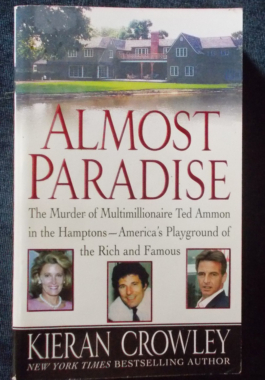 He was a multimillionaire but even his wealth and power could not save him. On October 22, 2001, handsome multimillionaire financier Ted Ammon was found bludgeoned to death in the magnificent East Hampton mansion he'd built with his beautiful - and volatile - wife, Generosa. She stood to make millions, but it wasn't the money that made Ted's friends suspicious: Generosa Ammon had a history of violent outbursts and bizarre obsessions. A talented interior decorator, Generosa had fashioned a lavish lifestyle for her husband and their two children, divided between Fifth Avenue, the Long Island estate, and a manor house in England. But when Generosa discovered Ted had a mistress, her demons were unleashed and she began a very public affair with Danny Pelosi, a strikingly handsome womaniser who was also her electrician. She called him her "tool belt guy." But he was also an ex-con who was suspected of playing a pivotal role in Ted's murder and the final destruction of a once-perfect family. Illustrated with photographs.
He was a multimillionaire but even his wealth and power could not save him. On October 22, 2001, handsome multimillionaire financier Ted Ammon was found bludgeoned to death in the magnificent East Hampton mansion he'd built with his beautiful - and volatile - wife, Generosa. She stood to make millions, but it wasn't the money that made Ted's friends suspicious: Generosa Ammon had a history of violent outbursts and bizarre obsessions. A talented interior decorator, Generosa had fashioned a lavish lifestyle for her husband and their two children, divided between Fifth Avenue, the Long Island estate, and a manor house in England. But when Generosa discovered Ted had a mistress, her demons were unleashed and she began a very public affair with Danny Pelosi, a strikingly handsome womaniser who was also her electrician. She called him her "tool belt guy." But he was also an ex-con who was suspected of playing a pivotal role in Ted's murder and the final destruction of a once-perfect family. Illustrated with photographs. -

Crime Scene: Esther McKay
$22.00Day after day my life was consumed by killings, distress and gruesome sites, each one adding another piece to an ever-growing mosaic that seemed to be made up of bloodied disposable gloves, plastic bags and human waste... When Esther McKay, an idealistic young constable with the NSW police, entered the tough, male-dominated world of forensic investigation, she was determined to hold her own. She soon found herself at deeply confronting crime scenes, often working alone and without supervision. After years of long, lonely, exhausting days and nights, and following a particularly harrowing high-profile case involving the disappearance of two young boys, Esther had a break-down and was diagnosed with post-traumatic stress disorder. Esther McKay takes us inside the life of a forensic investigator, and reveals as never before the extraordinary demands and dangers of forensic work. -
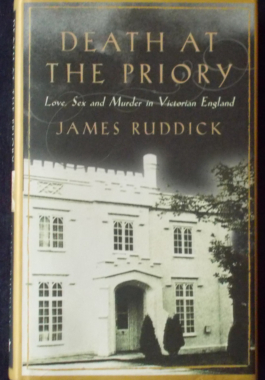 In 1875, beautiful, vivacious widow Florence Ricardo married Charles Bravo, a dashing barrister. The marriage seemed to be a happy one, although society gossips whispered that Bravo had married Florence for her fortune. Behind his charming public persona, Bravo was a brutal, vindictive man who dismissed his wife's devoted companion Mrs. Cox and regularly subjected Florence to violent abuse. Four months after the wedding, Bravo collapsed and for fifty-five hours - with some of London's most distinguished physicians in attendance - suffered a slow and agonising death. All the doctors agreed - he had been poisoned. The police were called in and everyone in the Priory, the house in South London in which he and Florence had lived, was under suspicion. The investigation was detailed and sensational and such was the public interest that it even eclipsed the coverage of the Prime Minister's negotiations with Egypt and the Prince of Wales' tour of India. The suspects included Mrs. Cox; George Griffiths, a coachman with a grudge against Bravo and at Florence Bravo herself. This is the recreation of the case with new evidence to conclusively prove who did kill Charles Bravo.
In 1875, beautiful, vivacious widow Florence Ricardo married Charles Bravo, a dashing barrister. The marriage seemed to be a happy one, although society gossips whispered that Bravo had married Florence for her fortune. Behind his charming public persona, Bravo was a brutal, vindictive man who dismissed his wife's devoted companion Mrs. Cox and regularly subjected Florence to violent abuse. Four months after the wedding, Bravo collapsed and for fifty-five hours - with some of London's most distinguished physicians in attendance - suffered a slow and agonising death. All the doctors agreed - he had been poisoned. The police were called in and everyone in the Priory, the house in South London in which he and Florence had lived, was under suspicion. The investigation was detailed and sensational and such was the public interest that it even eclipsed the coverage of the Prime Minister's negotiations with Egypt and the Prince of Wales' tour of India. The suspects included Mrs. Cox; George Griffiths, a coachman with a grudge against Bravo and at Florence Bravo herself. This is the recreation of the case with new evidence to conclusively prove who did kill Charles Bravo. -
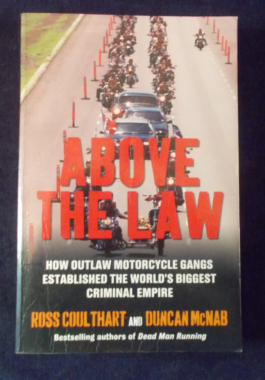 A forensic examination of the global future of organised crime - now being operated on a massive scale by outlaw motorcycle gang - and the difficulties faced by the Australian police in tackling the burgeoning crime empire that outlaw motorcycle gangs are developing in Australia and wherever else biker gangs flourish. It's a hard and chilling look at the global future of organised crime and reveals that the world's most successful criminal empire is now being operated on a massive scale by outlaw motorcycle gangs - an empire that is growing in power, reach and ruthlessness, far surpassing the threats posed by the Mafia, Russian syndicates, Chinese Triads and Japanese Yakuza. Outlaw motorcycle gangs are now being acknowledged as the greatest current organised crime threat with an international empire that is sophisticated, bloody and brutal. It is also both strategic and opportunistic - where they cannot dominate, they broker alliances. Here is how it all started: the turf wars that were fought, the deals that were done, and how the sea of cash that was earned is now being legitimised. It also reveals how law enforcement at an international level is losing the battle against the gangs. Using exclusive insider sources on four continents, this is the first contemporary account of one of the biggest criminal stories of our time.
A forensic examination of the global future of organised crime - now being operated on a massive scale by outlaw motorcycle gang - and the difficulties faced by the Australian police in tackling the burgeoning crime empire that outlaw motorcycle gangs are developing in Australia and wherever else biker gangs flourish. It's a hard and chilling look at the global future of organised crime and reveals that the world's most successful criminal empire is now being operated on a massive scale by outlaw motorcycle gangs - an empire that is growing in power, reach and ruthlessness, far surpassing the threats posed by the Mafia, Russian syndicates, Chinese Triads and Japanese Yakuza. Outlaw motorcycle gangs are now being acknowledged as the greatest current organised crime threat with an international empire that is sophisticated, bloody and brutal. It is also both strategic and opportunistic - where they cannot dominate, they broker alliances. Here is how it all started: the turf wars that were fought, the deals that were done, and how the sea of cash that was earned is now being legitimised. It also reveals how law enforcement at an international level is losing the battle against the gangs. Using exclusive insider sources on four continents, this is the first contemporary account of one of the biggest criminal stories of our time. -
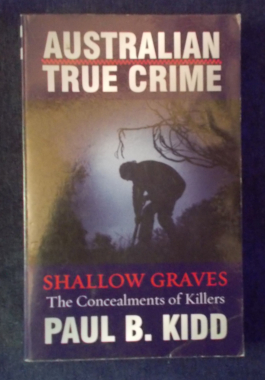 Shallow graves play a grim part in many of Australia's most mysterious, bizarre and horrendous murder cases. And Australia's bushland, beaches, deserts, foreshores and suburban landscapes offer many opportunities for a murderer to hide his victim. But in this updated edition, Kidd points out how even the best-laid plans of the most devious can go astray when a body turns up. Illustrated with black and white photographs.
Shallow graves play a grim part in many of Australia's most mysterious, bizarre and horrendous murder cases. And Australia's bushland, beaches, deserts, foreshores and suburban landscapes offer many opportunities for a murderer to hide his victim. But in this updated edition, Kidd points out how even the best-laid plans of the most devious can go astray when a body turns up. Illustrated with black and white photographs. -
 After fourteen years of marriage, Mel Jacob's life looked as perfect as the roses perched above her white picket fence. The nice house in the suburbs, two great kids, a good husband. Until...her seemingly saintly husband was jailed for two years. This recounts Mel's funny, moving and insightful journey as she navigates single parenthood, prison visitations and nosy neighbours...and tells of the family left behind: the grief, the stigma and the conversational minefields of her husband's whereabouts, as well as the logistical problems of making a baby sibling for her two children, and why it's not appropriate to tell people that Daddy's in jail. 'So why did you marry Dad?' my daughter asked. 'Well, over time I got to know him and he made me laugh, and - and I knew deep down that, that even though we were really different...he was a good person.' Without skipping a beat, she said, 'He's not that good, he's in jail!'.
After fourteen years of marriage, Mel Jacob's life looked as perfect as the roses perched above her white picket fence. The nice house in the suburbs, two great kids, a good husband. Until...her seemingly saintly husband was jailed for two years. This recounts Mel's funny, moving and insightful journey as she navigates single parenthood, prison visitations and nosy neighbours...and tells of the family left behind: the grief, the stigma and the conversational minefields of her husband's whereabouts, as well as the logistical problems of making a baby sibling for her two children, and why it's not appropriate to tell people that Daddy's in jail. 'So why did you marry Dad?' my daughter asked. 'Well, over time I got to know him and he made me laugh, and - and I knew deep down that, that even though we were really different...he was a good person.' Without skipping a beat, she said, 'He's not that good, he's in jail!'. -
 London, 1910 - the city is rocked by its first encounter with foreign gangsters. In December, a group of Russian anarchists were surprised while burgling a jeweller's shop in Houndsditch. They shot and killed three policemen and wounded two others. Within two weeks, most of the gang had been captured. Then the police were informed that the last two members of the gang were hiding at 100 Sidney Street. The police called in the military, local residents were evacuated and the firefight raged for six hours, culminating in the burning of the house and the discovery of the two agitators' bodies in the ruins. On New Year's Day, Leon Beron, a middle-aged Russian Jew, was found battered to death on Clapham Common. Knife cuts on his cheeks, inflicted after death, formed the shape of a rough 'S' - rumour said it was the revenge murder of an informer, 'S' being the initial letter for 'spy' in both Russian and Polish. Steinie Morrison, who had been seen in his company the night before, was arrested and charged with Beron's murder, and sentenced to hang. This was later commuted to life in prison. Morrison protested the change of sentence and for the next ten years, demanded that the original sentence be carried out, proclaiming his innocence and staging hunger strikes. He never changed his story, not even by the smallest detail, and died ten years later in prison. Was an innocent man convicted? And did the murder of Beron have any connection to the Siege of Sidney Street? With black and white photographs.
London, 1910 - the city is rocked by its first encounter with foreign gangsters. In December, a group of Russian anarchists were surprised while burgling a jeweller's shop in Houndsditch. They shot and killed three policemen and wounded two others. Within two weeks, most of the gang had been captured. Then the police were informed that the last two members of the gang were hiding at 100 Sidney Street. The police called in the military, local residents were evacuated and the firefight raged for six hours, culminating in the burning of the house and the discovery of the two agitators' bodies in the ruins. On New Year's Day, Leon Beron, a middle-aged Russian Jew, was found battered to death on Clapham Common. Knife cuts on his cheeks, inflicted after death, formed the shape of a rough 'S' - rumour said it was the revenge murder of an informer, 'S' being the initial letter for 'spy' in both Russian and Polish. Steinie Morrison, who had been seen in his company the night before, was arrested and charged with Beron's murder, and sentenced to hang. This was later commuted to life in prison. Morrison protested the change of sentence and for the next ten years, demanded that the original sentence be carried out, proclaiming his innocence and staging hunger strikes. He never changed his story, not even by the smallest detail, and died ten years later in prison. Was an innocent man convicted? And did the murder of Beron have any connection to the Siege of Sidney Street? With black and white photographs.



